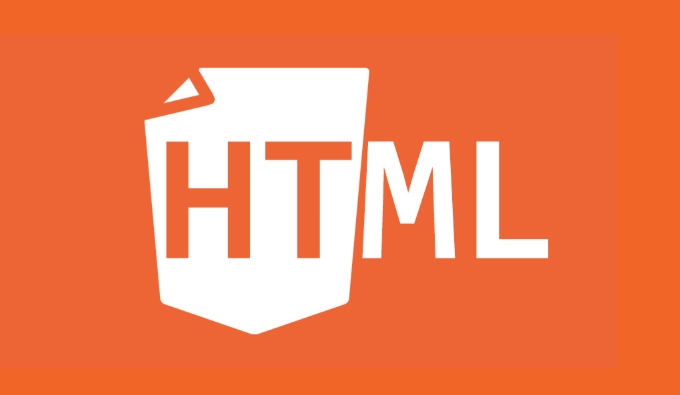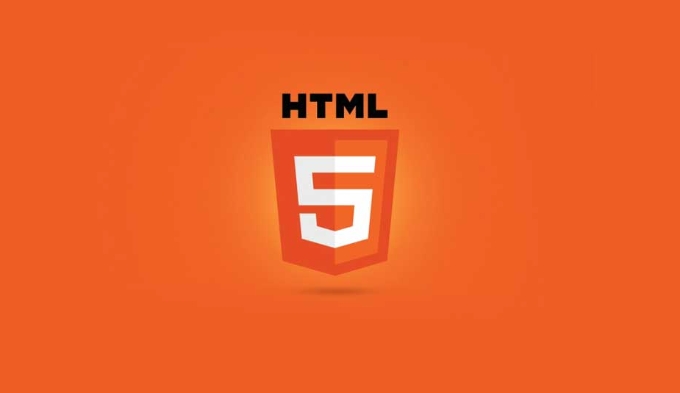To control the appearance of <video> tags in HTML, the core method is to use HTML attributes with CSS styles. 1. Use built-in properties such as controls, autoplay, loop, muted and poster to achieve basic functional control; 2. Adjust the size, borders, shadows and responsive layout of the video player through CSS to match the website design style; 3. If you need to fully customize the interface, you can remove the default controls and build the UI components yourself; 4. Use responsive design techniques to ensure that the video is displayed well on different devices, such as setting containers with an aspect ratio of 16:9 to avoid deformation.

When you want to control the appearance of <video></video> HTML tags, it's mostly about combining HTML attributes with CSS styling. The default look of a video player can vary across browsers, so if you're aiming for consistency or a custom design, you'll need to do more than just use the basic tag.
 and<video> HTML tags?" />
and<video> HTML tags?" />Use Built-in Attributes for Basic Control
The <video></video> tag comes with several built-in attributes that let you control playback and display without any extra code:
 and<video> HTML tags?" />
and<video> HTML tags?" />-
controls– adds the browser's default play, pause, volume, and timeline controls -
autoplay– starts playing the video automatically (may be blocked by browsers) -
loop– makes the video replay when it ends -
muted– starts the video with no sound -
poster– sets an image to show before the video plays
These are helpful for quick setups, especially if you don't need a custom look. But keep in mind, they won't change the visual style — just functionality.
Customize Appearance with CSS
To make your video blend into your site's design, you'll need to apply CSS. You can adjust size, borders, shadows, and even responsiveness:
 and<video> HTML tags?" />
and<video> HTML tags?" /> .video-wrapper {
max-width: 100%;
margin: auto;
border: 2px solid #ccc;
border-radius: 8px;
box-shadow: 0 4px 12px rgba(0, 0, 0, 0.1);
} You can wrap your video in a container and target the <video> element directly too:
<div class="video-wrapper"> <video src="myvideo.mp4" class="custom-video" controls></video> </div>
Then style it:
.custom-video {
width: 100%;
height: auto;
border-radius: 8px;
} If you want to hide the default controls and build your own UI (like buttons), you'll remove the controls attribute and add your own buttons with JavaScript event handlers for play/pause, volume, etc.
Responsive Design Tips
Videos should resize nicely on different screen sizes. A few tips to ensure that:
- Set
width: 100%andheight: autoso it scales within its container - Wrap videos in a div with padding-bottom trick for maintaining aspect ratio
- Use media queries to tweak layout at different breakpoints
Here's a common way to maintain a 16:9 aspect ratio:
<div class="video-container"> <video src="myvideo.mp4" controls></video> </div>
With this CSS:
.video-container {
position: relative;
width: 100%;
padding-bottom: 56.25%; /* 16:9 */
overflow: hidden;
}
.video-container video {
position: absolute;
top: 0;
left: 0;
width: 100%;
height: 100%;
}This keeps the video looking good on mobile and desktop without distortion.
Basically that's it. Whether you're tweaking small details or building a full custom player, combining HTML attributes and CSS gives you solid control over how your video appears to users.
The above is the detailed content of How do you control the appearance of and HTML tags?. For more information, please follow other related articles on the PHP Chinese website!

Hot AI Tools

Undress AI Tool
Undress images for free

Undresser.AI Undress
AI-powered app for creating realistic nude photos

AI Clothes Remover
Online AI tool for removing clothes from photos.

ArtGPT
AI image generator for creative art from text prompts.

Stock Market GPT
AI powered investment research for smarter decisions

Hot Article

Hot Tools

Notepad++7.3.1
Easy-to-use and free code editor

SublimeText3 Chinese version
Chinese version, very easy to use

Zend Studio 13.0.1
Powerful PHP integrated development environment

Dreamweaver CS6
Visual web development tools

SublimeText3 Mac version
God-level code editing software (SublimeText3)
 Implement vertical stacking of elements in Bootstrap Flexbox layout: from side to layer
Sep 21, 2025 pm 10:42 PM
Implement vertical stacking of elements in Bootstrap Flexbox layout: from side to layer
Sep 21, 2025 pm 10:42 PM
When using Bootstrap for web page layout, developers often encounter the problem of elements being displayed side by side rather than stacked vertically by default, especially when the parent container applies Flexbox layout. This article will explore this common layout challenge in depth and provide a solution: by adjusting the flex-direction attribute of the Flex container to column, using Bootstrap's flex-column tool class to achieve the correct vertical arrangement of H1 tags and content blocks such as forms, ensuring that the page structure meets expectations.
 Capture mousedown events with parent element containing cross-domain iframes: Principles and limitations
Sep 20, 2025 pm 11:00 PM
Capture mousedown events with parent element containing cross-domain iframes: Principles and limitations
Sep 20, 2025 pm 11:00 PM
This article explores the challenge of capturing mousedown events on parent divs containing cross-domain iframes. The core problem is that browser security policies (same-origin policy) prevent direct DOM event listening on cross-domain iframe content. This type of event capture cannot be achieved unless the iframe source domain name is controlled and CORS is configured. The article will explain these security mechanisms in detail and their limitations on event interactions and provide possible alternatives.
 How to add a tooltip on hover in html?
Sep 18, 2025 am 01:16 AM
How to add a tooltip on hover in html?
Sep 18, 2025 am 01:16 AM
UsethetitleattributeforsimpletooltipsorCSSforcustom-styledones.1.Addtitle="text"toanyelementfordefaulttooltips.2.Forstyledtooltips,wraptheelementinacontainer,use.tooltipand.tooltiptextclasseswithCSSpositioning,pseudo-elements,andvisibilityc
 How to make text wrap around an image in html?
Sep 21, 2025 am 04:02 AM
How to make text wrap around an image in html?
Sep 21, 2025 am 04:02 AM
UseCSSfloatpropertytowraptextaroundanimage:floatleftfortextontheright,floatrightfortextontheleft,addmarginforspacing,andclearfloatstopreventlayoutissues.
 JavaScript external function call difficulty analysis: script location and naming specification
Sep 20, 2025 pm 10:09 PM
JavaScript external function call difficulty analysis: script location and naming specification
Sep 20, 2025 pm 10:09 PM
This article explores two common problems when calling external JavaScript functions in HTML: improper script loading time causes DOM elements to be unready, and function naming may conflict with browser built-in events or keywords. The article provides detailed solutions, including tweaking script reference locations and following good function naming specifications to ensure JavaScript code is executed correctly.
 How to set the lang attribute in HTML
Sep 21, 2025 am 02:34 AM
How to set the lang attribute in HTML
Sep 21, 2025 am 02:34 AM
Setthelangattributeinthehtmltagtospecifypagelanguage,e.g.,forEnglish;2.UseISOcodeslike"es"forSpanishor"fr"forFrench;3.Includeregionalvariantswithcountrycodeslike"en-US"or"zh-CN";4.Applylangtospecificelementswhe
 What is the difference between object and embed tags in html?
Sep 23, 2025 am 01:54 AM
What is the difference between object and embed tags in html?
Sep 23, 2025 am 01:54 AM
Theobjecttagispreferredforembeddingexternalcontentduetoitsversatility,fallbacksupport,andstandardscompliance,whileembedissimplerbutlacksfallbackandparameteroptions,makingitsuitableonlyforbasicusecases.
 How to create a multi-select dropdown in html?
Sep 21, 2025 am 03:39 AM
How to create a multi-select dropdown in html?
Sep 21, 2025 am 03:39 AM
Use the select element to add multiple attributes to create a multi-select drop-down box. The user presses the Ctrl or Shift key to select multiple options, displays multiple lines through the size attribute, and submits the selected value in conjunction with the name attribute array format.




